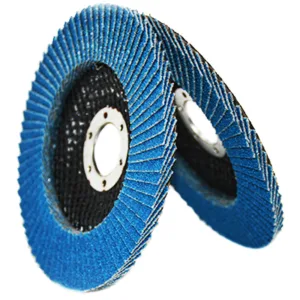In the intricate tapestry of global trade, every product has its unique identity encapsulated within a string of numbers – the Harmonized System (HS) code. Among the myriad of items traversing borders daily are flap discs, versatile tools essential in various industries for grinding, finishing, and polishing tasks. Let’s embark on a journey to uncover the HS code for flap discs and gain insights into their classification.
Understanding Flap Discs
Before we delve into the classification realm, let’s shed light on flap discs’ significance and usage. Flap discs are abrasive tools constructed with multiple overlapping abrasive flaps bonded to a central hub. These discs find extensive application in metal fabrication, woodworking, automotive, and construction industries. They excel in tasks such as deburring, grinding, blending, and finishing, thanks to their versatility and efficiency.
Decoding the Harmonized System (HS) Code
The HS code, an internationally standardized system for classifying traded products, is pivotal in regulating global commerce. Flap discs fall under the umbrella of abrasive products, which typically reside within Chapter 68 of the Harmonized System. However, pinpointing the precise HS code for flap discs requires a deeper dive into the classification system.
Flap discs are primarily classified under subheading 6805.30 of the HS code, which encompasses “Natural or artificial abrasive powder or grain, on a base of woven textile fabric only.” However, it’s essential to note that flap discs may have variations based on factors such as abrasive material, backing material, size, and intended use, influencing their specific HS code.
Factors Influencing Classification
Several factors influence the classification of flap discs within the HS code framework. Abrasive material composition, such as aluminum oxide, zirconia alumina, or ceramic grains, can impact classification. Likewise, variations in backing materials, such as fiberglass, plastic, or cloth, may necessitate different HS codes. Additionally, differences in size, grit size, and intended application may further refine the classification.
Trade Implications and Compliance
Accurate classification of flap disks under the HS code is crucial for international trade compliance and logistics. Importers and exporters must correctly identify and classify their products to comply with customs regulations, determine applicable duties and tariffs, and facilitate smooth cross-border transactions. Misclassification can lead to delays, penalties, and potential legal consequences, underscoring the importance of thorough understanding and adherence to HS code guidelines.
Conclusion
Flap discs may appear as simple abrasive tools, but their significance in various industries cannot be overlooked. From metal fabrication to woodworking, these versatile discs offer efficiency and precision in surface preparation and finishing tasks. Understanding the HS code for flap discs is crucial for navigating the complexities of international trade, ensuring compliance with customs regulations, and facilitating seamless cross-border transactions. So, whether you’re importing, exporting, or regulating flap disks, a clear grasp of their HS code is paramount in today’s interconnected global marketplace.



